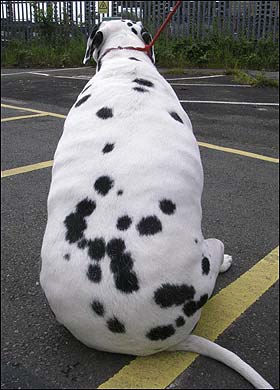Have you ever wondered which creature holds the title for being the fattest animal on Earth? While we often associate size and weight with land mammals like elephants or sea giants like whales, the answer might surprise you. Nature is full of fascinating creatures that have adapted in incredible ways to survive, and some of these adaptations involve storing fat for energy and insulation. Let's dive into this intriguing topic and uncover some surprising facts about the world's fattest animals.
From land to sea and even air, animals come in all shapes and sizes, but when it comes to fat content, only a few stand out. Understanding why certain species carry such high percentages of body fat can provide insight into their survival strategies and ecological roles. So, prepare to be amazed as we explore the incredible facts and unbelievable sizes of the world's fattest animals across different habitats.
Unveiling the Fattest Creatures Across Habitats
When discussing the world's fattest animals, it's essential to consider various environments where they thrive. On land, grizzly bears store up to 40% of their body mass as fat before entering hibernation during winter months. This impressive ability helps them endure long periods without food. Similarly, elephant seals also boast around 40% fat composition, crucial for maintaining warmth in cold waters while fasting during mating seasons.
In marine ecosystems, whales take center stage with an astonishing range of 35%-50% body fat depending on species and seasonal variations. These blubber layers serve multiple purposes including insulation against frigid ocean temperatures and providing vital energy reserves during migrations. Such adaptations highlight how critical fat storage is for sustaining life under challenging conditions.
Even in the skies above us, there exists an unlikely contender for the title of fattest animal – moths! One particular type of moth has been identified as holding the record at 72% fat content. This remarkable trait enables these insects to sustain prolonged flights over vast distances, showcasing nature's ingenuity in designing efficient energy systems within even the smallest organisms.
Exploring Fat Records Among Marine Giants
The blue whale reigns supreme not just as the largest living animal but also among those with significant fat percentages. With more than 35% of its massive bulk consisting of adipose tissue, these gentle giants hold records both in terms of sheer size and lipid content. Weighing up to 180 tonnes, their fatty deposits play pivotal roles in buoyancy control, thermoregulation, and long-distance travel capabilities.
Interestingly, despite popular belief associating obesity solely with negative health implications, these natural reservoirs of stored energy are indispensable for many species' survival. For instance, during lean times between feeding opportunities separated by thousands of miles, whale blubber acts as an internal fuel source ensuring continuous operation until reaching nutrient-rich feeding grounds again.
Beyond mere statistics, studying such phenomena provides valuable lessons regarding resource management within ecosystems. It underscores the importance of preserving diverse habitats necessary for maintaining healthy populations of these magnificent creatures who rely heavily upon effective utilization of fats throughout their lifecycles.
Blue Whales: Titans of Oceanic Proportions
The blue whale remains unparalleled as the heaviest animal on earth today. According to research published by BBC Newsround, an adult specimen may weigh close to 40 average-sized cars combined! Their colossal dimensions make them true titans of the deep blue seas, commanding respect from anyone fortunate enough to witness one in its natural habitat.
Despite their immense stature, these filter-feeding cetaceans consume relatively small prey items such as krill en masse each day to sustain themselves. Through specialized anatomical features like baleen plates lining their mouths instead of teeth, they efficiently sift through gallons upon gallons of water extracting nutritious morsels required to maintain their gargantuan frames.
This argument about relative sizes and weights showcases evolution's marvels shaping life forms perfectly suited for specific niches within global biodiversity networks. By appreciating these wonders, humanity gains deeper insights into interconnectedness fostering greater appreciation towards conservation efforts aimed at protecting endangered megafauna like blue whales worldwide.

